

1300+ Travel and tourism teaching resources
Disclaimer: Some posts on Tourism Teacher may contain affiliate links. If you appreciate this content, you can show your support by making a purchase through these links or by buying me a coffee . Thank you for your support!
Tourism Teacher is the number 1 choice for travel and tourism teaching resources amongst teachers, lecturers and trainers. The extensive resource bank provides a range of travel and tourism teaching resources to those working in secondary schools, colleges and universities as well travel and tourism practitioners and trainers.
The travel and tourism teaching resources are differentiated to suit learners of all needs and abilities, ranging from entry level travel and tourism students, to GCSE , A Level , BTEC and university level travel and tourism students. With over 1300 travel and tourism resources, including a range of activities, case studies, worksheets and PowerPoint presentations, teachers are well equipped to develop a comprehensive learning programme for their students.
As any travel and tourism teacher will know, the industry is dynamic and progressive, with ongoing changes to policy and practice. It is for this reason that the Tourism Teacher travel and tourism resources are updated regularly and new resources are developed each month. If there is a particular resource that you require that isn’t part of the 1300 bank of resources, then please do get in contact and I will do my best to produce these for you.
The resources are organised by topic and there is also a full resource bank for the BTEC Tech Award in Travel and Tourism and soon there will be the entire Cambridge International A Level in travel and tourism and Cambridge IGCSE in travel and tourism.

Types of travel and tourism teaching resources
There are a range of travel and tourism teaching resources available for you to use and adapt for your own classroom, including:
- PowerPoint presentations
- Printable worksheets
- Interactive activities
- Case studies
- Reading lists
- Journal articles
- Role play cards
- Classroom displays and posters
- Exam practice
Travel and Tourism Course Specific Resources
Whilst the 1300 travel and tourism teaching resources provided are useful for any course specification, I understand that sometimes it is easiest to ‘pick up and go’. Therefore I have created resources for the entire syllabus for the following qualifications:
- BTEC Teach Award
- Cambridge International Travel and Tourism A Level
- Cambridge IGCSE Travel and Tourism (coming soon)
Travel and tourism topics
The travel and tourism resources cover a wide range of topics, including:
- Travel and tourism industry
- Tour operations
- Sustainable/ responsible tourism
- Travel agency operations
- Airlines and airports
- Business tourism
- Visitor attractions
- Researching current issues/ research project
- Types of tourism/ niche tourism
- Planning an event
- European tourism
- Worldwide tourism
- Tourism and technology
- Tourism geography
- Customer service
- Ancillary revenue management
- Hospitality
- Rural tourism
- Leadership and management
- Cruise tourism
- Events and festivals
- Entertainment in tourism
- Nature and effects of world travel
- Destination planning and development
- Working in travel and tourism
- Social responsibility
- Resort Representatives
- Passenger transport
- Safety and security
- Study skills
- Employability skills
- Induction and tutorial activities
Sign up today!
Subscribe for just £199 per year. Cancel anytime.
How long will my membership last?
The membership is an annual subscription and you can continue to be a member for as long as you like!
Can I see some sample resources?
Yes- click here to download your free sample travel and tourism teaching resources.
Who developed the travel and tourism teaching resources?
All of the travel and tourism teaching resources have been developed by Dr Hayley Stainton and the Tourism Teacher team.
What level are these resources designed for?
These resources are designed to be used across a range of teaching levels and can be amended to make them easier/more challenging if needed.
How long will I get access to the resources?
You will have unlimited access to more than 1300 travel and tourism teaching resources for as long as you continue your subscription, which lasts for 12 months.
My institution needs an invoice- can you send one?
Yes. Please ask your school to email [email protected] to request an invoice.
Can I cancel my subscription?
Yes, you are free to cancel at any time.
Is it possible to pay by bank transfer?
If your educational institution would prefer to pay via bank transfer, please ask them to email [email protected] to request the details. Payments via bank transfer are available for £269.
Can I get a refund?
Once you have downloaded the materials you are no longer entitled to a refund.
Can I edit the resources for my own teaching?
Yes, all resources can be edited to suit your needs.
ESL Activities
ESL Games, Activities, Lesson Plans, Jobs & More
in Icebreakers + Warm-Ups · Listening · Reading · Speaking · Writing
Travel & Holidays ESL Games, Worksheets | ESL Travel Activities
If you need some fresh, new ideas for the ESL travel and holiday unit that you can find in most textbooks, then you’re in the right place. We’ll share our top ideas for games and activities, along with travel vocabulary, worksheets and lesson plans. Let’s get to the best ESL holiday activities.
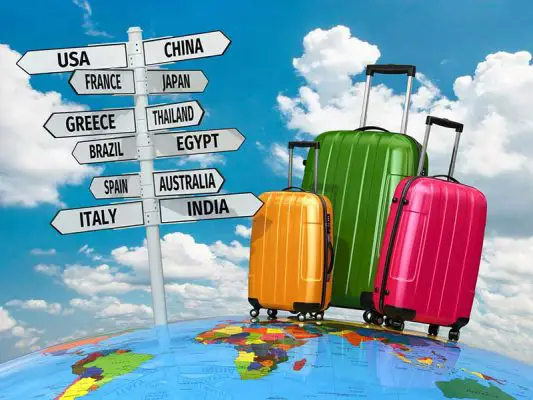
ESL holiday and travel-themed activities
Let’s get into everything you need to know for an ESL holiday lesson. Keep on reading!
ESL Travel and Holiday Activities
Here are the top ESL travel activities that you may want to try out with your students.
#1: Plan a Trip
Have your students plan a dream vacation in English! Instead of researching in their first language, use Google in English. In order to practice writing, keep notes only in English. Here’s an example of how you might plan your trip using English. You can have your students add as little, or as much detail as you’d like. However, the point of the activity is to practice writing in point form which is useful when writing outlines for tests or essays.
Day 1: Monday, January 1
Fly Seoul (3pm) —-> Vancouver (7am) Check in Hotel ABC, 123 Avenue Rest, relax
Day 2: Tuesday, January 2
Stay Hotel ABC Tour Stanley Park Eat Pub XYZ dinner
Day 3: Wednesday, January 3
Check out Hotel ABC Rent car Budget 123 Drive Whistler Rent skis shop ABC Go Skiing Lunch ski lodge Check in Hotel ABC Whistler Bed early
Procedure for one of my favourite ESL travel activities:
- Give students time to do some Internet research about a place they want to go. It’s helpful to specify the number of days. I generally make a rule that they must do this research in English. Suggest some helpful websites where they might like to start (Trip Advisor, Air BnB, etc.).
- Students can make a day-by-day itinerary of what they’re trip is going to look like.
- They can share about their trip with the class or turn it in for a graded assignment.

- Amazon Kindle Edition
- Bolen, Jackie (Author)
- English (Publication Language)
- 78 Pages - 03/22/2021 (Publication Date)
#2: A-Z Alphabet Game
If you know that your students already know a fair bit about holiday and travel, you may want to try this quick warm-up game. Or, you could consider using it as a review game at the end of a class.
The way it works is that students, in pairs or small groups write down the alphabet on a piece of paper. Then, they have to think of one travel related word for each letter. It doesn’t have to be done in order. For example:
P: Passport
The winner is the team with the most completed letters at the end of the allotted time. Do you want to find out more? Check this out: A-Z Alphabet Game ESL .
#3: Travel Word Association
This is nice ESL activity to do if you know that your students have studied about travel and holidays before. They can shout out vocabulary words related to this and you can make a mind map or sorts on the board. Group similar things together. For example, articles of clothing.
Find out more about this quick ESL warmer right here: ESL Vocabulary Word Association.

- 146 Pages - 06/18/2020 (Publication Date)
#4: Postcards ESOL Travel Activity
If you can get your hands on some cheap postcards or have some laying around your house or teacher’s office, try out this fun writing activity. It may just be the novelty factor, but students seem to love it. This activity is ideal for working on common greetings, the past tense (more ideas here: ESL past tense games ), and using descriptive words, as well as using synonyms to avoid repetition.
Distribute the postcards to the students. You can do one per student, or put the students into pairs. They have to look at the picture on the front of the postcard and imagine that they went on this vacation. Then, they can write about their trip to a friend or family member.
Next, the students trade postcards with another student or group. After reading them, they can write a response back of at least a few sentences. Finally, you may want to display them around the class as they’re colourful and fun and other students may enjoy reading them! Have some fun with this ESOL travel activity.
- Give each student or pair a postcard. They look at the picture and imagine what they did on that vacation, and then pretend that they’re writing to a friend or family member.
- Exchange postcards and another student or group have to write a response to what they read.
- Display the postcards around your classroom (optional).
#5: Travel or Holiday Videos
I’m ALL about using videos with my ESL/EFL students. They’re fun, engaging and a nice way to grab student’s attention and introduce a topic. Of course, you can base an entire class around one too if you design the activities well.
If you want to find out more about using them in your classes and some activities and games to do with them, you’ll want to check this out: Using Videos for Teaching English .
#6: Dictogloss ESOL Travel Activity
This is a challenging activity that works on listening and writing skills. Find a short story related to holiday or travel. It could even be a description of your own vacation that you took recently.
Then, you read out the story to your students in a way that is a bit challenging for them to catch every word. Students have to take notes and then try to reconstruct what they heard based on their notes in small groups. You can read it again so that students have a chance to make some additions or corrections. Finally, students compare their version with the original.
Do you want to try it out with your students? You can learn more about one of the best ESL travel activities here: ESL Dictogloss Activity .
#7: Holidays ESL Lesson Plan
It’s easy to plan an ESL lesson about any topic, including holidays. Check out this video for the steps to follow:
#8: Yes/No Questions and Answers
If you think about it, holidays and travel lend themselves to a ton of yes/no questions. For example:
- Did you fly or drive?
- Did you eat some delicious things?
- Was the food good?
- Did you have nice weather?
If you want to see some activities or games to work on these kinds of questions, you’ll want to check this out: Yes/No Activities and Games.

- 279 Pages - 07/12/2020 (Publication Date)
#9: ESL Food Activities and Games
I’m not sure if it’s the same for you, but when I travel, it’s ALL about the food. I want to try all the delicious things where I’m staying! The good news is that I have a ton of fun, interactive games and activities for food. You can easily adapt most of them to focus on holidays.
You can find out more details here: ESL Food Activities.
#10: ESL Surveys
I love to use surveys in my classes because they lend themselves to just about any topic. In the case of travel, they’re ideal for working on the present perfect and simple past together.
For example:
Have you ever travelled to another country?
Where did you go?
If you want to know more about how to design and use surveys in your classes for an ESL travel lesson, then you’ll want to check this out: Surveys for ESL Students.
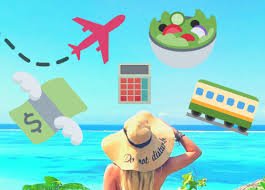
ESL Travel Games and Activities
I also love to use ESL surveys to get students to express an opinion in English.
#11: Present Perfect Activities Related to Travel
The present perfect is often used to talk about vacations, travel and holidays. For example:
- Have you ever been to another country?
- Have you travelled to ______ before?
In order to incorporate this grammatical construction into some of your lesson, you’ll want to check this out: Present Perfect ESL Activities.
#12: Brochure Scanning
This is an excellent travel activity! You’ll have to get your hands on some travel brochures first. The way it works is that students get tons of practice with a reading sub-skill (scanning) because they have to look quickly through the brochures to find specific bits of information. For example, cost or number or days.
Do you want to try out this reading activity? You can find out all the details here: Brochure Scanning Reading Activity for ESL .
#13: Odd One Out ESL Warmer
This is a quick English warm-up activity that you can try out with your students. The way it works is that you write words, in groups of 4 on the board. 3 are similar and 1 is the odd one out. Students have to choose this one and say why it doesn’t fit. For example:
Bathing suit, sunglasses, boots, flip-flops
Answers: Boots because it’s not for a beach vacation. I accept many different answers as long as students support it well.
You can learn more about this ESL warm-up here: Odd One Out for ESL .

- 87 Pages - 10/24/2019 (Publication Date)
#14: Would you Rather?
I’m sure you’ve done this before with friends. You have to choose between two negative things, or two positive things. For example, how you want to die, or what you want to eat. In this case, students could choose between two types of vacation. For example:
Would you rather have a beach or forest vacation?
Would you rather stay in a big hotel, or an AirBNB?
Learn more about this nice activity for an ESL travel lesson here: ESL Would You Rather?

- 81 Pages - 06/22/2021 (Publication Date)
#15: Task Based Activity: Dream Vacation
I love to incorporate this style of teaching into my holiday lessons. It allows students more freedom to choose what they want to learn about and also builds opportunities for some serious teamwork.
In this case, I’ll have students work in groups of 2-3 to plan a dream vacation. They can do some research to find out all the details including how to get there, food, budget, where to stay, etc. Then, they either have to write a report and hand it in to me and/or do a short presentation to the class.
Need some more ideas for this style of a lesson? Check this out: Task-Based Learning .
#16: Travel Themed Charades
I love to play charades with my students. The way it works is that you can think of some travel-related phrases. For example:
- Flying on a plane
- Sleeping on a bus
- Eating noodles
- Buying souvenirs
Then, students have to act this out and their teammates have to guess what the phrase is. More details here: ESL Charades.
#17: Travel Journal
Encourage students to keep a travel journal for a fictional trip. They can describe their experiences, sights, and sounds, using new vocabulary.
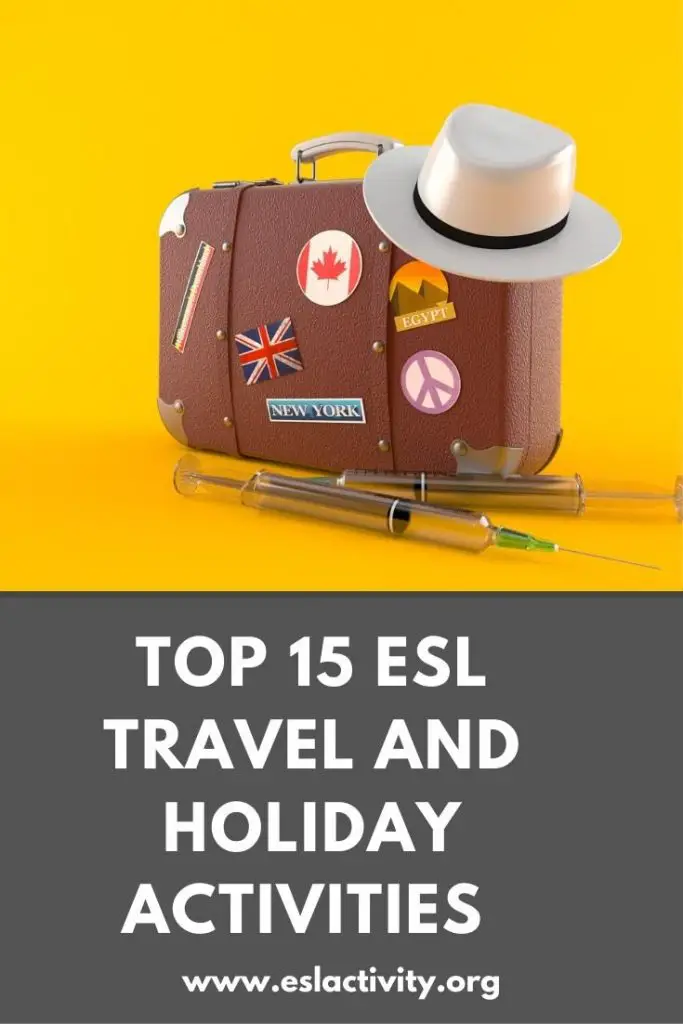
Travel and Holidays ESL
#18: Eliciting in an ESL Travel Lesson
Unless your students are absolute beginners, then it’s likely that they already know a good amount of travel and holiday vocabulary. That’s often why I like to start off my ESL traveling lesson by using some eliciting techniques. There are two main reasons for this.
The first reason is that it’s possible to find out what the students already know about this topic to avoid wasting class time covering these things. The second is that it helps students activate their prior knowledge about travel/holidays to make the new things they learn more memorable. Learn how to do this tactic for an ESL holiday lesson here:
ESL Eliciting Advice .
#19: Travel Listening Lesson
A nice way to talk about any topic is through a listening lesson. In this case, find a conversation between two people talking about an upcoming vacation plan. Or, someone talking about a favourite vacation from the past (it could even be you). Then, design an entire listening lesson around that. Find out how here:
#20: Idiom ESL Traveling Activity
There are lots of idioms related to holidays, travel and transportation. Here are just a few of them:
- All hands on deck
- To send flying
- Bump in the road
- Off the rails
- Train wreck
- Asleep at the wheel
- Fall off the wagon
- Hit the road
One of the best ways to make these idioms super memorable is to do this fun activity. Afterwards, your students will never forget! Learn more about this ESL activity:
Idiom Activity for Language Learners .
#21: Concentration ESL Traveling Vocabulary
One of the best ways to review new words during an ESL holiday or travel lesson is to play this memory game. Depending on the level of the students, make some matching pairs of cards with the following:
- Word/picture
- Word/definition
- Word/clue about the word
Then in small groups, students play the game to find the matches. Find out all the details about how to set it up and play:
ESL Concentration Game .
#22: Speaking Fluency Activity
To use this activity with a unit on holidays or travel, have students talk about a past, or upcoming vacation.
#23: Me Too!
Students have to make a true statement about themselves related to holidays and travelling. For example:
- I’ve been to Japan.
- I hate the beach.
- My family goes on a big vacation every summer.
If other students can agree, they stand up and say, “Me too!”
#24: Labour Day Guessing Game
#25: Holiday Interviews
Pair students and have them interview each other about their favorite holidays. They can then present their partner’s holiday to the class.
#26: Travel Bingo
Create bingo cards with images or words related to travel and holidays. Students mark off the squares as they learn new vocabulary.
#27: Travel-Themed Role-Plays
Set up role-plays where students act as travelers, airport staff, or hotel receptionists. This helps them practice common travel dialogues.
#28: Travel Vocabulary Pictionary
Play Pictionary using travel-related words. Students take turns drawing and guessing the vocabulary words.
#29: Travel Storytelling
Ask students to create and share short stories about a memorable travel experience they’ve had or wish to have in the future.
#30: Travel Debate
Have students debate the pros and cons of traveling. This encourages critical thinking and speaking skills.
Travel and Holiday Vocabulary
Here are some of the most common vocabulary words that you may want to teach your students related to traveling for an ESL holiday lesson.
- bathing suit
- boarding pass
- vaccination
- The months of the year in English
Do you have any ESL travelling vocabulary that you’d like us to add to the list? Leave a comment and let us know!
Travel Worksheets and Lesson Plans for ESL
If you’re looking for some worksheets or lesson plans related to holidays and travel, then you’ll want to check out some of our top resource recommendations:
ESOL Courses
ISL Collective
Lingua House
ESL Travel Vocabulary Worksheets
If you want students to get some practice with ESL travel vocab, here are a few recommendations:
English Club
Did you Like these Travel Games for ESL?
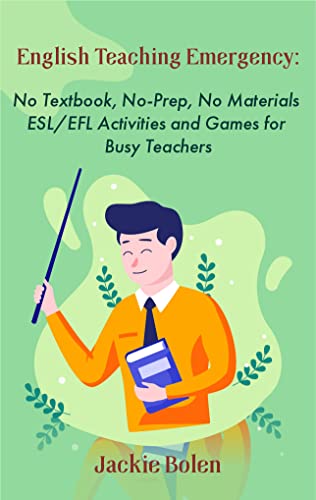
- 68 Pages - 11/12/2019 (Publication Date)
Yes? Thought so. Then you’re going to love this book: The Emergency English Teacher: No-Textbook, No-Prep, No-Materials ESL Activities.
If you’re always in need of last-minute activities and games for your classes, then this book is exactly what you might need. It’s English teaching made easy in a serious way.
You can get the book in digital or print formats. Take the e-version with you to your favourite coffee shop for lesson planning on the go. Or, keep a copy on the bookshelf in your office to use as a handy reference guide. But the best idea is to have it with you at all times for those English teaching emergencies.
Do you want to find out more? Head on over to Amazon to pick up your copy today:

FAQs about ESL Travel Lessons
There are a number of common questions that people have about teaching this unit. Here are the answers to some of the most popular ones.
What is the purpose of teaching the travel and holiday unit to English learners?
The purpose is to help English learners develop vocabulary, grammar, and conversational skills related to travel and holidays.
What topics can be covered within the travel and holiday unit?
Topics can include modes of transportation, booking accommodations, tourist attractions, holiday activities, travel phrases, and cultural aspects of different destinations.
How can I introduce vocabulary related to travel and holidays?
You can introduce vocabulary through visual aids, realia (actual objects), flashcards, and interactive activities such as matching games or vocabulary quizzes.
What grammar structures can be taught in the travel and holiday unit?
Grammar structures such as present simple for schedules and timetables, past simple for recounting travel experiences, future tenses for making travel plans, and modal verbs for expressing preferences or asking for permission can be taught.
What speaking activities can be used to practice travel and holiday-related topics?
Role-plays, group discussions about dream destinations, travel itineraries, or describing holiday experiences are effective speaking activities. Additionally, pair work activities like “Find Someone Who” or “Guess the Destination” can engage learners in conversation.
ESL Travel Activities and Games: Join the Conversation
What are your thoughts about these Holiday ESL activities? Do you have another one that you’d like to recommend to us? Leave a comment below and let us know what you think. We’d love to hear from you.
Also be sure to give this article a share on Facebook, Pinterest, or Twitter. It’ll help other busy English teachers, like yourself find this useful resource for ESOL travel lessons.
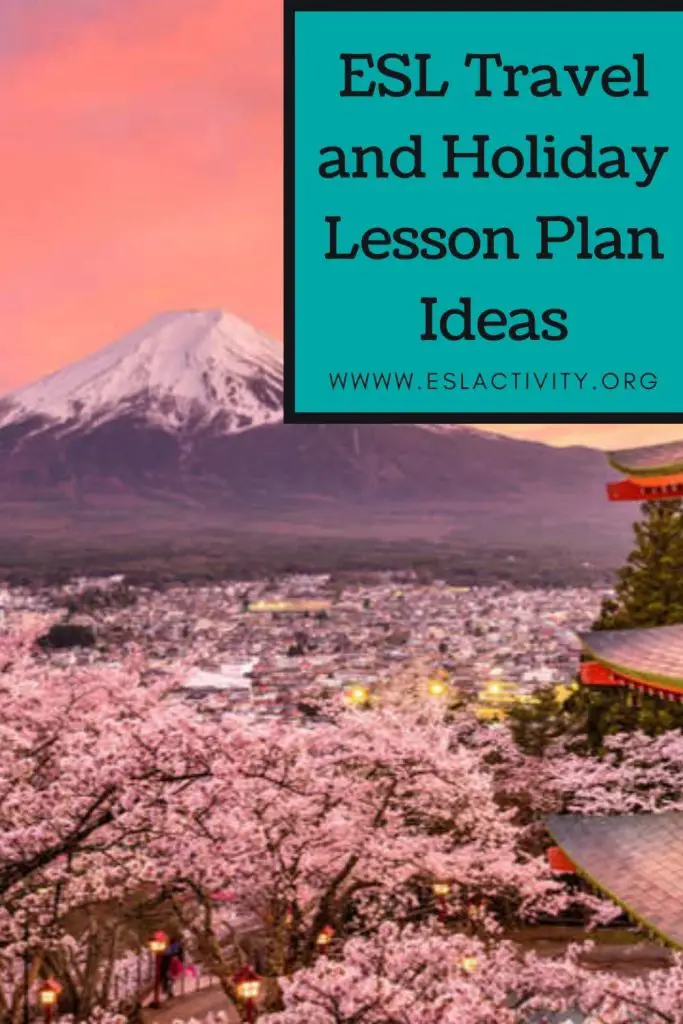
ESL Travel Lesson
Last update on 2022-07-17 / Affiliate links / Images from Amazon Product Advertising API
About Jackie
Jackie Bolen has been teaching English for more than 15 years to students in South Korea and Canada. She's taught all ages, levels and kinds of TEFL classes. She holds an MA degree, along with the Celta and Delta English teaching certifications.
Jackie is the author of more than 60 books for English teachers and English learners, including Business English Vocabulary Builder and 39 No-Prep/Low-Prep ESL Speaking Activities for Teenagers and Adults . She loves to share her ESL games, activities, teaching tips, and more with other teachers throughout the world.
You can find her on social media at: YouTube Facebook Pinterest TikTok LinkedIn Instagram
Top Selling ESL Activity Book

As an Amazon Associate, I earn from qualifying purchases.
More ESL Activities and Games

Cognitive Load Theory: What is It? | John Sweller Cognitive Loading
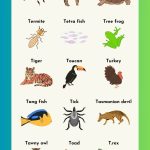
Animals that Start with T | Names, Pictures, Fun Facts

What is Discourse in Language Learning? | Classroom Discourse Definition

Teaching Collocations: ESL Games, Activities, Lesson Plans & Worksheets
About, contact, privacy policy.
Best-selling author and English teacher Jackie Bolen has been talking ESL activities and games since 2015. The goal is to bring you the best ideas, lesson plans, and activity recommendations for your TEFL classes.
Get in touch: About + Contact
Privacy Policy and Terms of Use
Email: [email protected]
Address: 2436 Kelly Ave, Port Coquitlam, Canada

Jump to navigation
Resources and Programs
- Teaching the Four Skills
- U.S. Culture, Music & Games
- Massive Open Online Courses (MOOCs)
- Other Resources
- English Club Texts and Materials
- Teacher's Corner
- Comics for Language Learning
- Online Professional English Network (OPEN)

This month’s Teacher’s Corner explores the world of travel and tourism. Specifically, each week covers travel-related topics that students can use to practice speaking, reading, and listening.
For many English learners, traveling the world is one of the many reasons they study English. No matter where you travel, it is easy to find a speaker of English to help you on your journey. However, as every good traveler knows, it is best to be prepared. This month’s Teacher’s Corner is devoted to giving students the chance to practice and prepare their English for the world of travel.
The activities this month are designed to give students the opportunity to creatively practice their English while thinking about travel both at home and abroad:
- Week 1 – Around the World
- Week 2 – What to See in Town
- Week 3 – Planning a Trip
- Week 4 – Over-tourism
Week 1 begins the month with a Pecha Kucha style presentation. In these fast-paced presentations, students must describe an around-the-world trip in three minutes using only six presentation slides. In Week 2, students practice common phrasal verbs used in travel and tourism. In Week 3, students describe the tourist attractions in their home countries by preparing a six-day trip for a new visitor. Finally, this month’s Teacher’s Corner concludes with a debate activity focused on the increasing concern of over-tourism.
Table of Contents
In this week’s Teacher’s Corner, students are tasked with creating a Pecha Kucha presentation on an around-the-world trip. Pecha Kucha is a presentation style where each presenter is allowed twenty slides which are shown for twenty seconds each. The goal is to encourage the speaker to be concise – to not talk too long. For this activity, students will get six slides shown for thirty seconds each, with each slide showcasing a place they would like to visit on a trip around the world.
Intermediate to Advanced
LANGUAGE FOCUS
Speaking, reading (primary focus) Listening (secondary focus)
Students will practice speaking, reading, and listening through
- Researching locations they would like to visit on a trip around the world
- Delivering a three-minute presentation about their around-the-world trip
- Teacher: computer, projector, stopwatch or other timing device, a map
- Students: notebook, pencil, paper, computers (for research to be done as homework, or books and encyclopedias)
PREPARATION
- Read through all the materials carefully.
- For this activity, students will be giving presentations to the class. To save time, be sure that students submit their presentations as a homework assignment before the day they will present them. The teacher should then have all the presentations loaded onto the class computer, ready to go at the start of the class. Having the presentations already loaded will save time, compared to each student separately loading his or her presentation on the computer. Having the presentations ready to go at the start of class will save time, compared to each student separately loading his or her presentation on the computer. If a computer is not available, this can be done on sheets of large paper as well.
- During this activity, students will be giving presentations that have a set time limit of three minutes. To keep students on time, the teacher controls when the slides of the presentation change. Optionally, a student can be selected as the official timekeeper. This student can sit at the presentation computer to advance the slides instead of the teacher.
PART ONE: PREPARING TO DEPART
- Begin the class by showing a map of the world. To warm students up for the activity, ask students to come to the board and point to countries that you name.
- If none of the students know the meaning of the word, give them a clue. For example, point to the United States and tell the students, “The United States is a country.” Next, point to Mexico and tell the students, “Mexico is a country, too.” Finally, point to Canada and say, “Canada is also a country.” Then tell the students, “The United States, Mexico, and Canada are all on the same continent.” While speaking, use your finger to draw a large circle around the North American continent. (Don’t forget to include Central America too!)
- To check the students’ comprehension of the word continent ask the class, “How many continents are there in the world?” Students should respond with “seven”; if they answer “six,” they may have forgotten about Antarctica!
- Ask the students which continent they most want to visit and why. Tell the students to think about their answers.
- Next, have the students form pairs and share their answers with their partners.
- Finally, have students share their answers with the entire class.
- Inform the class that for homework they are going to plan an around-the-world trip.
- Explain to the students that they will prepare a presentation to show the class about their around-the-world trip.
- Instruct the students that their one location per continent must be a city, national park, or sightseeing location. An entire country is too large to select as one location!
- Students must travel in one direction around the world (either east or west).
- Each slide should have some basic information about the location and at least one picture of the location.
- Finally, inform the students that they will only have three minutes to give their presentation to the class, and each slide will only be shown for thirty seconds. So, students should practice their presentations before class!
PART TWO: CLASS PRESENTATIONS
- On the day students give their class presentations, remind them they only have thirty seconds for each slide. If time permits, give the students a few minutes to check their notes and prepare for their presentations.
- Have the first student presenting come to the front of the class.
- Open the student’s presentation and start the timer. After thirty seconds move to the next slide; after another thirty seconds move to the third slide; and so on.
- Optional: After all the students have presented their around-the-world trip, have the class vote on the most interesting trip!
This week’s Teacher’s Corner provides students with the opportunity to practice using phrasal verbs in an activity about New York City.
Reading, speaking (primary focus) Listening (secondary focus)
During this activity, students will
- Practice speaking skills through a matching activity
- Practice reading skills and using travel-related phrasal verbs in a worksheet activity
- Teacher: whiteboard or chalkboard, markers or chalk
- Students: pencils or pens, notebooks or writing paper
- Print out copies of the phrasal verb cards in Appendix 1. a. Students will use the phrasal verb cards in a pair-work activity. Print enough copies of the phrasal verb cards for each pair of students to have a set.
- Cut out the phrasal verb cards and for each set, mix the cards so that the phrasal verbs and definitions are mixed well.
- Print out copies of the phrasal verbs fill-in-the-blank worksheet in Appendix 2. Students will use the worksheet in a pair-work activity. Print enough copies of the worksheet for each pair of students to have one. The answer key is in Appendix 3.
ACTIVITY PART ONE: PHRASAL VERB WARM-UP
- Begin the class by having the students form pairs.
- Give each pair a set of phrasal verb cards (already mixed up) from Appendix 1.
- Have the students work together to match each phrasal verb to its correct definition.
- After the students have completed the matching activity, review the answers as a class.
- Next, ask the students, “What do the phrasal verbs have in common?” a. Answer: Each of the phrasal verbs is related to travel.
- Next, ask the students, “What is the one city in the world you would like to visit?” a. Optional: Ask the students this question as part of a Think, Pair, Share activity. i. First, have the students think about their answer individually. ii. Next, have the students share their answer with their partner. iii. Finally, encourage the students to share their answer or, even better, to share their partners’ answers with the class.
ACTIVITY PART TWO: PHRASAL VERB WORKSHEET
- Begin this part of the activity by asking the students if they would like to visit New York City.
- Next, ask why they would like to visit the city, or ask what they would like to do if they visited the city.
- As students answer the questions, pass out the phrasal verb fill-in-the-blank worksheet to the pairs of students. Instruct them to read through the worksheet and circle any vocabulary they don’t know. a. If students have questions about vocabulary, take a few moments to answer their questions before moving on to Step 4.
- Next, have the pairs of students fill in the blanks on the worksheet with the phrasal verbs on the cards they used in Part 1 of this activity. As students work, walk around the room to check on their progress.
- Once the pairs have finished filling in the blanks, check their answers as a class.
APPENDIX 1: PHRASAL VERBS MATCHING CARDS
week2_chart.png

APPENDIX 2: PHRASAL VERBS FILL-IN-THE-BLANK WORKSHEET
appenx2_3.jpg

New York has been called “The City That Never Sleeps!” With so many things to do at any time of day, New York is a great place to visit on vacation. Thanks to New York’s many transportation options, you don’t need anyone to __________ you __________ at the airport. Instead, you can take a bus or the subway into the city, or even have one of the city’s famous yellow taxis __________ you _________ at your hotel. After you ___________________ to your hotel, you can ____________________ on your NYC adventure!
If it is your first visit to New York, be sure to take some time to ____________________ the city by taking a walk. It can be a great way to get to know the city and experience the New York way of life. Some of the best things about New York can be found by ___________________ the many diverse neighborhoods full of great food, interesting events, and historical landmarks. Even though New York is famous for its busy streets, you can ___________________ from the crowds by visiting Central Park. There you can walk through the trees, sit by the lake, and even get a famous New York City hot dog.
Of course, no trip to New York would be complete without visiting the Statue of Liberty. To visit, you need to ____________________ a ferry at Battery Park. While crossing the water, you can ____________________ a wonderful view of the city. Once on Liberty Island, you can walk around the statue, visit the museum, or climb the 377 steps to the top of the Statue of Liberty. It is an incredible experience, but tickets sell out quickly!
As you leave New York and your plane ____________________, be sure to enjoy the view out the window to get one last look at the city that never sleeps!
APPENDIX 3: PHRASAL VERBS FILL-IN-THE-BLANK ANSWER KEY
New York has been called “The City That Never Sleeps”! With so many things to do at any time of day, New York is a great place to visit on vacation. Thanks to New York’s many transportation options, you don’t need anyone to ____pick you up_____ at the airport. Instead, you can take a bus or subway into the city, or even have one of the city’s famous yellow taxis ______drop you off________ at your hotel. After you _____check in________ to your hotel, you can ____set out_________ on your NYC adventure!
If it is your first visit to New York, be sure to take some time to __look around____ the city by taking a walk. It can be a great way to get to know the city and experience the New York way of life. Some of the best things about New York can be found by __checking out___ the many diverse neighborhoods full of great food, interesting events, and historical landmarks. Even though New York is famous for its busy streets, you can ___get away_________ from the crowds by visiting Central Park. There you can walk through the trees, sit by the lake, and even get a famous New York City hot dog.
Of course, no trip to New York would be complete without visiting the Statue of Liberty. To visit, you need to ____get on__________ a ferry at Battery Park. While crossing the water, you can _____take in________ a wonderful view of the city. Once on Liberty Island, you can walk around the statue, visit the museum, or climb the 377 steps to the top of the Statue of Liberty. It is an incredible experience, but tickets sell out quickly!
As you leave New York and your plane ___takes off________, be sure to enjoy the view out the window to get one last look at the city that never sleeps!
This month’s Teacher’s Corner explores travel and tourism. This week’s activity asks students to think about their own cities or countries by designing a six-day trip for a visiting tourist.
LEVEL Intermediate to Advanced
FOCUS Reading, writing (primary focus) Speaking, listening (secondary focus)
GOALS During this activity students will
- Practice speaking skills while creating a travel plan for their country or city
- Practice presentations skills while delivering their travel plans to the class
- Teacher: whiteboard or chalkboard, markers or chalk, poster paper (optional)
In this activity, students will prepare a travel plan for someone visiting their country or city for the first time. This activity can take place during one class period or across two classes depending on how much time your students need to prepare their travel plans.
- Print out copies of Appendix 1 Travel Plans. Print enough copies so that each group of two to three students has one to complete.
ACTIVITY PART ONE: HOMEWORK – TRAVEL PLANNING
- Begin this activity by having the students form groups of two to three students.
- Give each group a copy of the Travel Plan from Appendix
- Have the students work together to brainstorm a six-day travel plan to their country. a. If your students are from a large city, they could plan the entire six-day trip just in their city. If your students are from a smaller city or more rural area, they can plan a regional or nation-wide trip.
- As the groups work, walk around the room asking groups for details about their trip. Encourage them to be as specific as possible. For example: if they write “stay in a hotel,” instruct them to be more specific: What hotel? Where in the city? What makes that hotel or area of the city interesting?
- Optional: Depending on time and student levels, this activity can also be a homework assignment. After the groups have finished their travel plans, the homework can challenge the students to use the travel plans to create a poster, a flyer, or even a video where students can show off their six-day travel plans.
ACTIVITY PART TWO: TRAVEL SHOWCASE
- After the groups have finished their travel plans, give them time to prepare a speaking presentation to the class. a. Instruct the students that for the presentation each student in the group must speak. For example, in a group of three students, each student can present on two days of the trip. b. Note: Depending on students’ level and ability, this presentation part of the activity can be done on a separate day to give the students more time to prepare.
- Next, have each group come to the front of the class and describe the travel plan they made to the rest of the class. a. For additional speaking practice, encourage the rest of the class to ask questions about the trip.
- After each group has presented their travel plan, have the class vote on the presentations. Which travel plan was the best? Which was the most adventurous? Which was the most historic?
APPENDIX 1: TRAVEL PLANS
Directions: Plan a six-day trip to your country for a person who has never visited before. Choose a city, region, or the entire country. Include everything, such as what to visit, where to stay, and what to eat!
This month’s Teacher’s Corner explores the world of travel and tourism. With travel becoming easier and cheaper all around the world, people who live in popular tourist locations have begun to ask if too much tourism can be a problem. In this week’s activity, students will debate the positives and negatives of tourism.
Speaking, listening (primary focus)
Reading, writing (secondary focus)
- Practice reading skills while reading an article about over-tourism
- Practice speaking and listening during a debate on tourism
- Teacher: whiteboard or chalkboard, markers or chalk, a timing device, Internet (optional)
- Before class, read the article " Too Much Tourism "and listen to the audio version of the story.
- Print out copies of Appendix 1: “Too Much Tourism” article. Print enough copies so that each student has one. Note: If a computer lab is an option for your class, have the students read the article by visiting this URL: https://learningenglish.voanews.com/a/too-much-tourism/4118421.html
- On the website, the article has an audio version that can be streamed over the Internet or downloaded and played on a computer in class.
ACTIVITY PART ONE: "TOO MUCH TOURISM" ARTICLE
- Direct students' attention to the board.
- On the board write the word tourism . Ask the students what the word tourism means.
- Next, as a check of their understanding, ask the class where in their country is popular for tourism?
- Then, write the word over in front of the word tourism to create the new word over-tourism.
- Again ask the students to provide a definition for this word. a. Note: Over-tourism is a recent issue that has gained attention in the news and travel industry. It does not have an exact definition, but as long as students describe a problem of too many visitors to a place, their definition is acceptable.
- Once again, check the students’ understanding by asking if there are any locations in their country that they think face problems with over-tourism. a. Note: Depending on the level of the students, this question can be asked as a Think, Pair, Share. First have the students think about the question, then have them share their answers with a partner, finally have the pairs of students share their answers with the class.
- Next, provide each student with a copy of the “Too Much Tourism” article in Appendix 1. Give students time to read the article. a. Note: To provide students more listening practice, have them listen to the article by playing the audio version of the story from the webpage.
- To check their comprehension, ask the following questions: a. How many trips are tourists expected to take by the year 2030? (Answer: 1.8 billion) b. What is Croatia doing to help stop over-tourism? (Answer: Limiting the number of daily visitors to the city of Dubrovnik.)
- Finally, as a show of hands, ask the students who thinks limiting tourism is a good idea? Tell the class they will have the opportunity to share their opinions in a debate.
ACTIVITY PART TWO: THE TOURISM DEBATE
- Note: For this debate, students will argue for and against tourism. If you teach a large class, you may want to break students into groups and then have these groups form two teams that can debate. Another option for larger classes is for students to volunteer to participate in the debate, while the rest of the class can act as audience and decide which team won.
- Begin the debate by dividing the class (or a group of students) into two teams. Decide which team will be the For side, which will argue in favor of the topic, and which will be the Against side, which will argue against the theme of the topic.
- While the students are forming For and Against teams, go to the chalkboard and write the theme and topics for the debate: Debate Theme: Tourism Topic #1: Whether tourism is always good for the local economy, and the economy is more important than too many tourists. Topic #2: Whether too much tourism can harm the local culture of a city. Topic #3: Whether people should travel less. a. Note: If time permits have the students debate all three topics. For large classes, students can take turns debating: one group of students debates one topic, then the next group of students debates the next topic, and so on.
- Direct the students’ attention to the three debate topics that you have written on the board and tell the students they should prepare their ideas on these topics for the debate. a. Note: For more advanced lessons, assign the debate preparation as homework so students can research the topics and prepare with more details.
- Once the students are prepared, have the students who are going to debate first come to the front of the class. Have the two teams form lines on opposite ends of the board. Begin the debate by having the first student in line of the For team present his or her argument for one minute. Then the first student from the Against team has one minute to challenge the ideas presented by the For team’s student.
- After the first students from each team have spoken for a minute, have them move to the back of the line and have the second student in each line more forward. They will now debate against each other. This time the Against student goes first for one minute. The student for the For team then gets to present his or her argument on the topic. Continue until all students have had the opportunity to debate.
Remember: An effective debate is not only about presenting an argument but also challenging the argument of one’s opponent. For more information on debates and ideas for using debates in class, check out The Great Mini-Debate on the American English webpage.
APPENDIX 1: TOO MUCH TOURISM?
- Privacy Notice
- Copyright Info
- Accessibility Statement
- Get Adobe Reader
For English Language Teachers Around the World
The Bureau of Educational and Cultural Affairs, U.S. Department of State, manages this site. External links to other Internet sites should not be construed as an endorsement of the views or privacy policies contained therein.
- Grades 6-12
- School Leaders
Don't Miss the Grand Prize: A $2,500 Office Depot/OfficeMax Card!
20 Activities for the Travel-Curious Classroom
A list of culture-boosting activities for a classroom or travel club.
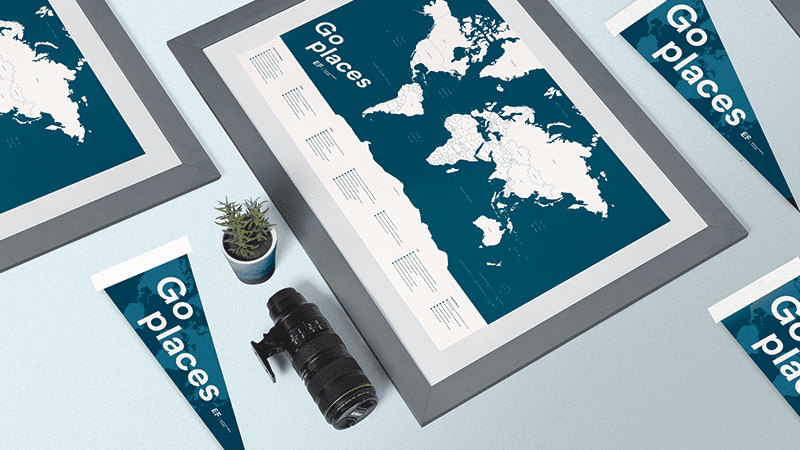
You’ve assigned the translation worksheets and the what-did-you-do-over-holiday-break essays. And it’s great because you’ve got them thinking about life in other parts of the world. But what’s next? If you’re like us at EF Tours , you’re constantly on the hunt for ways to bring students closer to the world at large. That’s why we thought a list of culture-boosting activities could be really helpful in a classroom, or for a travel club.
Grab a copy of the EF Journal
We hear great stories, tips, and insights from within our community of travelers, educators, and wanderers nearly every day. So, we’re sharing them with the world: cue the EF Journal . Within its pages, you can find fresh perspectives, fun activities, discussion topics, and more .
Do a Google Earth scavenger hunt
Exploring the world can start in the classroom. Find the coordinates for the world’s greatest wonders and hidden gems, then task your students with finding them on Google Earth , a free resource by Google that allows users to explore the world via satellite imagery. You can spice it up by including initial coordinates and some directions (move two blocks and then take a right), then asking them to describe the exciting new place they’ve discovered.

Host a music video watch party
Music aficionados, rejoice! Bring your favorite foreign language music videos, crowdsource some from your group, and have a music video marathon. Bonus points if your video includes elaborate dance routines to practice.
Lead a lesson on body language from around the world
We all know that different parts of the world speak different languages . But what we might forget is that the body language and gestures we use each day may have different meanings when we’re abroad, and vice versa. With a quick Google search , you can find out how body language is used around the world—and practice nonverbal communication with your students.
Play geography trivia
Play into your students’ competitive spirit with a little travel trivia—find some questions online, or make some of your own. Either way, a little competition never hurt anyone, right?
Hold an international flavor taste-test
Seaweed potato chips. Green Tea Kit Kats. Melon Fanta. The world is wide and the combinations of national treasures with unique international flavors are endless. Lucky for your students, many of these oddball flavors can be ordered online . Just get a unique assortment of flavored snacks and test them out—Oreos are a good place to start since they come in a variety of flavors, they’re low-cost and easy to order online, and frankly, universally loved.
Try a suitcase challenge
Put your packing skills to the test. Tightly pack a suitcase with funny items, then time your students on how quickly they can unpack and then re-pack it themselves. To keep it interesting, keep a scoreboard or play for small prizes.
Have a Carnival celebration
Carnival: It’s feathers, not Ferris wheels; costumes, not corn dogs; brass bands, not bumpy rides. It’s an annual festival of dancing, masks, and parades that is celebrated in over 20 countries around the world, including Brazil , Italy, and Jamaica—and now in your classroom. Explore the importance of Carnival in various regions and maybe have celebration of your own.
Need more ideas? Here are a few to get you started.
- Do a local photography challenge
- Have a souvenir show and tell
- Lead an origami lesson
- Take a group cooking class
- Watch a foreign language TV show
- Try a local foreign restaurant
- Pair up with pen pals
- Explore the Guggenheim, virtually
- Create travel bucket lists
- Have a Chinese New Year celebration
- Watch a themed documentary as a group
- Hold a Día de los Muertos celebration
You Might Also Like
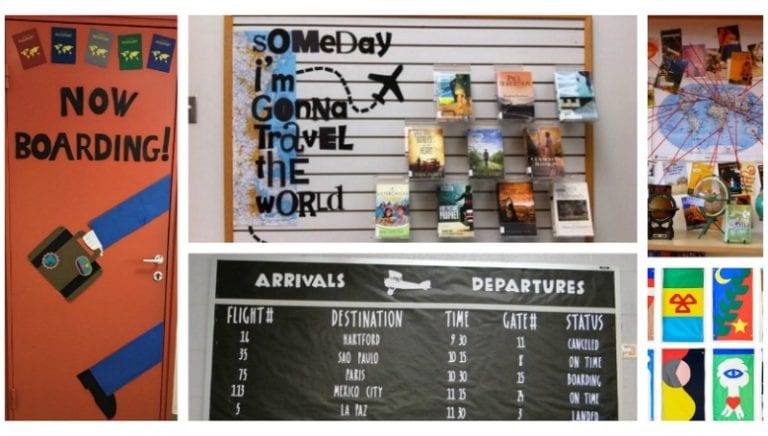
20 Travel Classroom Theme Ideas
Show them the world from your classroom. Continue Reading
Copyright © 2024. All rights reserved. 5335 Gate Parkway, Jacksonville, FL 32256
Topic: Travelling

Hotel reviews
Engage students in conversations about different types of places to stay and their experiences! With this lesson, students practise vocabulary related to accommodation, watch videos and write hotel reviews.

My home is your home
Check out this lesson to have an engaging conversation about home exchange and house sitting and help your students learn useful vocabulary to describe experiences.

Please have your boarding pass ready
Students learn airport and plane phrases, listen to announcements and watch a video with a song. They also talk, role-play and exchange ideas.

Business trips: fun or boring?
This lesson allows students to talk about business trips, learn some useful vocabulary, and have a lot of discussion and role-play.
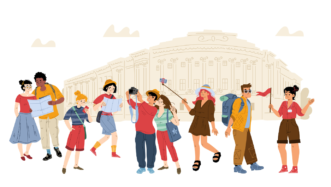
Downsides of tourism
This speaking lesson focuses on talking about tourism and its problems. Students talk about travelling in general and tourism as an industry, watch a video and discuss solutions to the problems.

The intangible benefits of travelling
In this lesson students talk about the article they read at home, learn some vocabulary and talk about different ways of travelling and their benefits.

Food culture, coffee culture
In this ESL lesson about coffee and food culture students have a lot of discussion, watch a video, study nouns that can be both countable and uncountable, and have a lot of fun practice.

Living abroad
In this ESL lesson about living abroad, students watch a testimonial video about learning Portuguese in Brazil, learn some useful collocations and talk about living in different countries.
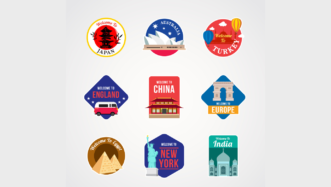
Nation branding and St. Patrick’s Day
In this lesson about St. Patrick’s Day, students watch a video about the origins of the holiday. They also discuss nation branding and practise vocabulary for talking about abstract ideas.

Are you into flying?
This worksheet focuses on speaking about air travel. Students answer different questions, watch and discuss a video. They also read and discuss short stories and create their own.

Would you like a lava snack?
With this tourism lesson plan, students discuss gastro-tourism, watch a video and learn vocabulary related to food.

Life is better outdoors!
In this lesson, students watch a video about Taiwan and practise vocabulary related to nature and free time activities.
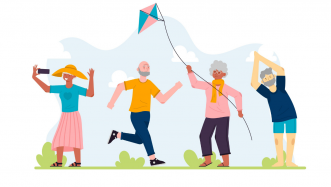
You’re never too old for great things
In this lesson, students learn the differences between Present Perfect and Past Simple. They also practise using the two tenses, watch a video and talk about active lives of elderly people.

Visiting the art capital
This lesson plan is all about New York. Students will discuss some quotes about New York, watch a video about art in this city and learn adjectives to describe art.
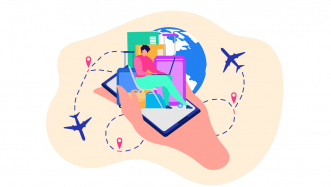
Travel is the only thing you buy that makes you richer
With this travel worksheet, pre-intermediate students can talk about how travelling changes them and learn some useful vocabulary. They also read a short text, watch a video about dream travel destinations and write an email.

Let’s go hiking!
In this lesson students learn hiking vocabulary, read some tips, watch a video about hiking and decide what they would and wouldn’t take on a hike.

Flying business class (conjunctions and prepositions)
In this video-based lesson about flying economy, business and first class with Emirates, students will be practising conjunctions and prepositions. They will also discover some luxurious cabin features while discussing business trips.
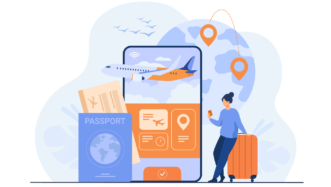
What are your travelling tips? (modal verbs)
Thanks to this worksheet, students will discover and practise modal verbs (can, have to, should), watch a video and discuss different travelling tips and rules.
Subscribe to get premium content
Subscribe to get access to professional, ready-to-use lesson plans in both digital and printable formats . Discover a variety of lesson types: Standard Lessons, Speaking Classes, Critical Reading Club worksheets and Flipped Classroom lesson plans.
Username or Email Address
Remember Me
- Teaching secondary
- Lesson plans
- Secondary lesson plans - Intermediate B1
Round-the-world travellers
This lesson offers a variety of activities based on British round-the-world travellers; a cyclist, a running granny and a teenage sailor.

Students will firstly review country names, and then there is an activity to pre-teach vocabulary for a jigsaw reading task, where students will explain their texts to each other. There follows a role play in which students play the part of a traveller or a journalist, and this is followed by a task where students compare ideas on advice to world travellers. Finally there is a more open discussion task about young people, travel and world records.
Aims: • To learn vocabulary related to travel and adventure • To develop reading skills • To practise speaking skills Age group: 12- adult
Level: B1 / B2
Time: 60 minutes
Materials: Around-the-world travellers student worksheet, jigsaw reading texts, and lesson plan
Copyright – Please read
All the materials on these pages are free and available for you to download and copy for educational use only. You may not redistribute, sell or place these materials on any other web site without written permission from the BBC and British Council. If you have any questions about the use of these materials, please e-mail [email protected]
Research and insight
Browse fascinating case studies, research papers, publications and books by researchers and ELT experts from around the world.
See our publications, research and insight
- TEA Website
- Contact TEA
- Sign Up For Updates

Lesson Plan: Travel and Tourism Industry
Description.
In this lesson, students will differentiate between the hospitality industry and the tourism industry. Learning about each industry's unique functions, students will have a deeper understanding and a better perspective on choosing their career path.
Download the lesson plan
Scroll to the related items section at the bottom of this page for additional resources.
Winter is here! Check out the winter wonderlands at these 5 amazing winter destinations in Montana
- Travel Tips
How To Teach Travel And Tourism
Published: December 13, 2023
Modified: December 28, 2023
by Basia Gladden
- Plan Your Trip
- Travel Guide
Introduction
Welcome to the exciting world of travel and tourism education! Teaching travel and tourism is not only a rewarding career choice, but it also plays a vital role in shaping the future of the industry. Travel and tourism education equips students with the knowledge and skills needed to navigate this dynamic and multi-faceted field.
As the travel industry continues to grow and evolve, the demand for well-trained professionals is on the rise. This is where travel and tourism education comes in. Whether it’s guiding students in understanding the cultural, social, and economic impact of tourism, or teaching practical skills such as travel planning and hospitality management, educators play a crucial role in preparing the next generation of travel professionals.
In addition to preparing students for a future career in the industry, teaching travel and tourism also helps foster a sense of global citizenship and cultural awareness. Through interactive and engaging learning experiences, students gain a deeper understanding of the world, its diverse cultures, and the importance of sustainable travel practices.
Throughout this article, I will explore key concepts in travel and tourism education, effective teaching strategies, available learning resources, assessment methods, as well as the challenges and solutions in teaching travel and tourism.
So whether you’re an experienced travel and tourism educator looking for new ideas to enhance your teaching or someone considering a career in this field, this article will provide you with valuable insights and practical tips to make your travel and tourism education journey a successful one.
Importance of Teaching Travel and Tourism
Teaching travel and tourism is not just about imparting knowledge and skills; it is about shaping future industry professionals and creating a positive impact on the global economy and society as a whole. Here are some reasons highlighting the importance of teaching travel and tourism:
- Economic Impact: The travel and tourism industry is a significant driver of economic growth in many countries. By teaching students about the industry’s economic impact, including job creation, revenue generation, and foreign exchange earnings, educators contribute to building a strong workforce and promoting economic prosperity.
- Cultural Understanding: Travel and tourism education fosters cultural appreciation and understanding. Through learning about different destinations, customs, traditions, and languages, students develop a deeper appreciation for global diversity. This leads to a more interconnected and tolerant society.
- Sustainable Practices: In an era of increasing concern for the environment, teaching sustainable travel and tourism practices is crucial. By emphasizing the importance of responsible tourism, such as reducing carbon footprint, preserving natural resources, and respecting local communities, educators help shape environmentally conscious individuals who can contribute to a more sustainable future.
- Professional Development: The travel and tourism industry offers a wide range of career opportunities. By teaching students about different job roles, industry trends, and necessary skills, educators prepare them for successful careers in travel, hospitality, event management, tourism marketing, and more. This empowers students to pursue their passion and contribute to the growth of the industry.
- Global Citizenship: Teaching travel and tourism cultivates global citizenship by encouraging students to explore different cultures and engage with diverse communities. This not only broadens their perspective but also develops empathy, cultural sensitivity, and respect for others. It helps students become responsible global citizens who are aware of their impact on the world.
By recognizing and embracing the importance of teaching travel and tourism, educators can empower students to become future industry leaders, promote sustainable practices, and contribute to the growth and development of the sector. Through comprehensive education, students acquire the knowledge and skills necessary to succeed in a fast-paced and ever-evolving industry while making a positive impact on the world around them.
Key Concepts in Travel and Tourism Education
When teaching travel and tourism, there are several key concepts that form the foundation of a well-rounded education. These concepts help students develop a comprehensive understanding of the industry, its impact, and its various components. Here are some essential key concepts in travel and tourism education:
- Tourism Management: This concept focuses on understanding the principles and practices of managing tourism destinations, attractions, and businesses. Students learn about destination marketing, hospitality management, event planning, tour operations, and sustainable tourism practices.
- Cultural and Heritage Tourism: Cultural and heritage tourism emphasizes the exploration and preservation of unique cultural traditions, historical sites, and tangible and intangible heritage. Students delve into the significance of cultural tourism in promoting understanding and appreciation of diverse cultures.
- Travel and Tourism Marketing: Marketing plays a critical role in the travel and tourism industry. Students learn about marketing strategies, consumer behavior, digital marketing techniques, and destination branding. They explore how marketing can effectively promote destinations and attract tourists.
- Tourism Policy and Planning: This concept involves understanding the policies, regulations, and planning processes that govern the tourism industry. Students explore the role of governments, organizations, and stakeholders in shaping tourism development and ensuring its sustainability.
- Sustainable Tourism: Sustainable tourism emphasizes the importance of minimizing negative impacts on the environment, culture, and local communities while maximizing positive socio-economic benefits. Students learn about sustainable practices, responsible tourism, and the role of eco-tourism in preserving natural resources.
- Customer Service and Experience: The travel and tourism industry heavily relies on delivering exceptional customer service and creating memorable experiences for travelers. Students learn about customer service techniques, hospitality skills, and the importance of personalized experiences to enhance customer satisfaction.
These key concepts provide a comprehensive foundation for students in travel and tourism education. By understanding these essential concepts, students gain a holistic view of the industry, its challenges, and its potential. This knowledge equips them with the necessary skills and insights to excel in various roles within the travel and tourism sector.
Teaching Strategies for Travel and Tourism
Teaching travel and tourism requires a dynamic and engaging approach to ensure students grasp the concepts effectively. Here are some effective teaching strategies to enhance the learning experience:
- Real-World Case Studies: Use real-world case studies to provide practical examples that connect theory to the industry. This helps students understand how concepts apply in real-life scenarios and encourages critical thinking.
- Field Trips: Organize field trips to tourism destinations, hotels, or travel agencies to give students firsthand experience of the industry. This not only brings the learning to life but also exposes students to different job roles and operational processes.
- Guest Speakers: Invite guest speakers from the travel and tourism industry to share their experiences and insights with the students. This offers a valuable opportunity for students to learn directly from professionals and gain insights into industry trends and best practices.
- Group Projects: Assign group projects that require collaboration and problem-solving. This helps students develop teamwork skills and encourages them to apply their knowledge to real-world scenarios.
- Technology Integration: Utilize technology tools and resources to enhance learning. This can include virtual field trips, online simulations, interactive quizzes, and multimedia presentations. Incorporating technology keeps students engaged and allows for a more immersive learning experience.
- Role-Playing: Encourage role-playing activities where students take on different roles within the tourism industry. This helps develop their communication skills, problem-solving abilities, and decision-making capabilities.
- Industry Internships: Facilitate internships or work placements in tourism-related organizations to provide students with real-life work experience and develop industry-specific skills. This practical exposure contributes to a well-rounded education and enhances employability.
By employing these teaching strategies, educators can create a dynamic and interactive learning environment that fosters active participation and knowledge retention. It is important to remember that teaching travel and tourism should be a balance between theoretical knowledge and practical application to prepare students for the industry’s demands.
Learning Resources for Travel and Tourism Teaching
When it comes to teaching travel and tourism, utilizing a variety of learning resources can enrich the educational experience and cater to diverse learning styles. Here are some valuable learning resources for travel and tourism teaching:
- Textbooks and Reference Materials: Utilize textbooks and reference materials specifically designed for travel and tourism education. These resources provide a comprehensive overview of the industry, including concepts, theories, case studies, and best practices.
- Online Learning Platforms: Explore online platforms that offer specialized travel and tourism courses and learning modules. These platforms often include interactive lessons, quizzes, and discussion forums to facilitate engagement and knowledge retention.
- Professional Associations and Industry Websites: Many professional associations and industry websites provide access to a wealth of resources such as research papers, industry reports, statistical data, and industry-specific news. These resources can be used to enhance learning and provide the latest industry insights.
- Industry Events and Conferences: Encourage students to attend travel and tourism industry events, conferences, and trade shows. These events provide opportunities for networking, learning about industry trends, and gaining a deeper understanding of the industry’s current practices and challenges.
- Documentaries and Videos: Incorporate documentaries and videos related to travel and tourism into your teaching material. These visual resources can bring destinations, cultures, and tourism concepts to life, making the learning experience more engaging and memorable.
- Online Travel Platforms and Booking Websites: Introduce students to online travel platforms and booking websites such as Expedia or Airbnb. This allows them to explore travel itineraries, compare prices, and understand the role of technology in the travel and tourism industry.
- Industry Case Studies: Utilize industry case studies to demonstrate real-life examples and challenges within the travel and tourism sector. Analyzing these case studies helps students apply theoretical concepts to practical scenarios and develop problem-solving skills.
- Social Media and Blogs: Engage with travel and tourism-related social media accounts and blogs. These platforms provide up-to-date information, travel experiences, destination guides, and insights into the latest travel trends. Encouraging students to follow reputable sources helps them stay connected to the industry’s dynamic nature.
By utilizing a diverse range of learning resources, educators can cater to different learning preferences and create a well-rounded learning experience. It is essential to stay updated with the latest industry resources and encourage students to explore the vast array of available materials to foster a deeper understanding of the travel and tourism industry.
Assessment Methods in Travel and Tourism Education
Assessing student learning is a critical component of travel and tourism education. It allows educators to evaluate students’ understanding of key concepts, their ability to apply knowledge to practical scenarios, and their overall proficiency in the field. Here are some common assessment methods used in travel and tourism education:
- Examinations and Quizzes: Traditional examinations and quizzes are effective in assessing students’ understanding of foundational knowledge and their ability to recall information. These assessments can cover topics such as destination knowledge, industry terminology, tourism management principles, and marketing strategies.
- Case Studies and Written Assignments: Assigning case studies and written assignments allows students to apply their knowledge to real-world scenarios. These assessments can involve analyzing tourism development plans, developing marketing strategies for a destination, or evaluating the socio-cultural impacts of tourism.
- Group Projects and Presentations: Group projects and presentations encourage teamwork, critical thinking, and communication skills. Students can be tasked with designing a sustainable travel itinerary, creating a tourism marketing campaign, or presenting a research study on emerging trends in the industry.
- Practical Assessments and Simulations: Practical assessments involve hands-on activities that demonstrate students’ ability to perform specific tasks related to travel and tourism. This can include role-playing customer service scenarios, managing a simulated travel agency, or creating sample tour packages.
- Industry Internships and Work Placements: Assessing students during their industry internships or work placements provides an opportunity to evaluate their practical skills and professional conduct in a real-world setting. This can involve supervisor evaluations, reflective journals, and performance assessments.
- Online Assessments: Online assessments, such as quizzes and interactive modules, can be used to gauge students’ understanding of specific topics or concepts. These assessments can be self-paced and provide immediate feedback, promoting independent learning and knowledge retention.
- Peer Reviews and Feedback: Incorporating peer reviews and feedback allows students to evaluate each other’s work and provide constructive criticism. This promotes self-reflection, collaboration, and the development of analytical skills.
When selecting assessment methods, it is important to align them with the learning outcomes and objectives of the course. A combination of different assessment methods ensures that students are evaluated on various skills and competencies, including knowledge recall, critical thinking, problem-solving, teamwork, and industry-specific skills.
Furthermore, providing timely and constructive feedback to students is crucial. Feedback aids in their learning and growth, allowing them to identify areas for improvement and build upon their strengths. It also helps to encourage engagement and motivate students throughout their travel and tourism education journey.
Challenges and Solutions in Teaching Travel and Tourism
Teaching travel and tourism comes with its own set of challenges, but with the right strategies and solutions, these challenges can be overcome to create an effective learning experience. Here are some common challenges faced in teaching travel and tourism, along with potential solutions:
- Keeping Pace with Industry Changes: The travel and tourism industry is constantly evolving, with new trends, technologies, and practices emerging. To address this challenge, educators can stay updated with industry news, attend professional development programs, and collaborate with industry experts. This allows them to incorporate relevant and up-to-date information into their teaching methods.
- Engaging Diverse Learners: Tourism students come from diverse backgrounds and have different learning preferences. To engage these learners, educators can incorporate a variety of teaching strategies, such as case studies, group projects, role-playing activities, and technology-based learning. This ensures that different learning styles and preferences are accommodated, creating a more inclusive and engaging learning environment.
- Promoting Practical Skills: The travel and tourism industry relies heavily on practical skills. However, teaching these skills can be challenging in a classroom setting. To address this, educators can incorporate hands-on activities, simulations, industry internships, and guest speakers. These practical experiences provide students with opportunities to apply their knowledge and develop essential skills that are directly transferable to the industry.
- Fostering Cultural Sensitivity: As travel and tourism involve encounters with diverse cultures, it is important to foster cultural sensitivity among students. Educators can facilitate this by incorporating cultural experiences, promoting respectful interactions, and encouraging open dialogue. Guest speakers from different cultural backgrounds can also provide first-hand insights and help students develop a global perspective.
- Promoting Sustainable Tourism Education: Sustainable practices in travel and tourism are crucial for the industry’s future. Educators can address this challenge by integrating sustainability into the curriculum through case studies, discussions, and projects. Students can be encouraged to explore sustainable tourism practices and strategies, promoting the importance of responsible tourism and its impact on the environment and communities.
- Access to Industry Resources: Access to industry-specific resources and networks can be limited in an academic setting. To overcome this challenge, educators can forge partnerships with local tourism organizations, invite industry professionals as guest speakers, and utilize online resources, such as industry blogs, webinars, and research papers. This provides students with exposure to current industry practices and trends.
By recognizing and addressing these challenges, educators can create a more relevant and impactful learning experience for travel and tourism students. Through continuous professional development, engagement with industry partners, and an inclusive teaching approach, educators can equip students with the knowledge, skills, and cultural sensitivity required for successful careers in the dynamic travel and tourism industry.
Teaching travel and tourism is a fulfilling and important endeavor that prepares students for a dynamic and ever-expanding industry. By imparting knowledge, fostering skills, and promoting cultural understanding, educators play a crucial role in shaping future travel professionals and global citizens.
We have explored the importance of teaching travel and tourism, highlighting its economic impact, cultural significance, and role in promoting sustainability and global citizenship. We have also discussed key concepts in travel and tourism education, including tourism management, cultural and heritage tourism, and sustainable practices.
To enhance the learning experience, we have examined effective teaching strategies such as real-world case studies, field trips, and guest speakers. We have also discussed the importance of utilizing diverse learning resources, including textbooks, online platforms, and industry events, to provide a well-rounded education.
Assessing student learning in travel and tourism education is crucial, and we have explored various assessment methods such as examinations, group projects, and practical assessments. These methods enable educators to evaluate students’ understanding and proficiency in the field.
While challenges exist in teaching travel and tourism, we have provided solutions to overcome them. From staying updated with industry changes to fostering cultural sensitivity and promoting sustainable practices, educators can address these challenges through professional development, engaging teaching strategies, and industry partnerships.
In conclusion, teaching travel and tourism is an exciting opportunity to shape the future of the industry and inspire students to become well-rounded professionals. By embracing innovative teaching strategies, collaborating with industry partners, and nurturing a passion for travel and cultural understanding, educators can create a transformative learning experience that prepares students for success in the dynamic world of travel and tourism.

- Privacy Overview
- Strictly Necessary Cookies
This website uses cookies so that we can provide you with the best user experience possible. Cookie information is stored in your browser and performs functions such as recognising you when you return to our website and helping our team to understand which sections of the website you find most interesting and useful.
Strictly Necessary Cookie should be enabled at all times so that we can save your preferences for cookie settings.
If you disable this cookie, we will not be able to save your preferences. This means that every time you visit this website you will need to enable or disable cookies again.
Jump to navigation
Lesson Plan: Travel and Tourism
This lesson shows how the development of tourism and different modes of transportation changed maps and history. It starts with tourism in Europe and ends with tourism in Maine. The activity that accompanies this is a map of the United States, which the students complete by coloring in the states they have visited according to how they got there. They also choose three states they have visited and draw a picture symbolizing their ideas of that state.
- Grade Levels: 3-5
- Time Allotment: 60 to 75 minutes
- Maine Social Studies Standards: C1, E1
Presentation
- PPT: Presentation
- PDF: Script (with images)
- DOC: Script (text only)
- ZIP: Lesson Maps
- Game: Streamlined Train Game
- Worksheet: Where in the USA?
- Extra Options:
- Ocean Liner Card Game
- Introduction to Steamships Worksheet --> Answers
Further Reading
- Hanson, Susan. Geography of Urban Transportation. 2004.
- FIND RARE MAPS & BOOKS
- SEARCH FOR US ROAD MAPS
- SEARCH OCEAN LINER COLLECTION
- FIND REFERENCE BOOKS (ursus)
- DOING RESEARCH AT OML
- ASK A LIBRARIAN
- CURRENT EXHIBITION
- PREVIOUS EXHIBITIONS
- SPECIAL MAP EXHIBITS
- MAP COMMENTARIES
- TRAVELING EXHIBITIONS
- NEWS ~ OF MAPS AND HISTORY
- TWENTIETH ANNIVERSARY
- MAPMAKING CONTEST
- FOR K-12 EDUCATORS
- • Field Trips & Class Visits
- • Downloadable Activities & Lessons
- • Professional Development
- • Request Field Trip or Class Visit
- FOR KIDS: MAP PLAY (for grades 3-8)
- FOR POST-SECONDARY EDUCATORS
- • Request Guest Class at OML
- FRIENDS OF THE OSHER MAP LIBRARY
- DONATE ITEMS TO OML
- VISIT & CONTACT INFORMATION
- • Directions
- • Staff Directory
- OSHER MAP LIBRARY
- • Facilities
- • Print Publications
- • Employment Opportunities
- IMAGING SERVICES
- MAP HISTORY
- • Other Online Resources
- SITE STRUCTURE & CREDITS
- International
- Schools directory
- Resources Jobs Schools directory News Search

Starter game for tourism topic.
Subject: Geography
Age range: 11-14
Resource type: Worksheet/Activity
Last updated
17 June 2013
- Share through email
- Share through twitter
- Share through linkedin
- Share through facebook
- Share through pinterest

Tes classic free licence
Your rating is required to reflect your happiness.
It's good to leave some feedback.
Something went wrong, please try again later.
monicaromerocamps
Empty reply does not make any sense for the end user
A fun starter that I will use with Y8s.
Report this resource to let us know if it violates our terms and conditions. Our customer service team will review your report and will be in touch.
Not quite what you were looking for? Search by keyword to find the right resource:
The way we travel now
What sorts of journeys do today’s travelers dream about? Where would they like to go? What do they hope to do when they get there? How much are they willing to spend on it all? And what should industry stakeholders do to adapt to the traveler psychology of the moment?
About the authors
To gauge what’s on the minds of current-day travelers, we surveyed more than 5,000 of them in February and March of this year. 1 Unless otherwise noted, the source for all data and projections is McKinsey State of Travel Survey, 5,061 participants, February 27 to March 11, 2024. Our universe of respondents included travelers from five major, representative source markets: China, Germany, the United Arab Emirates, the United Kingdom, and the United States. All respondents took at least one leisure trip in the past two years. We asked them more than 50 questions about their motivations, behavior, and expectations.
Results from this survey, supplemented with findings from focus groups and other additional research, suggest six vital trends that are shaping traveler sentiment now.
Travel has become a top priority, especially for younger generations
Sixty-six percent of the travelers we surveyed say they’re more interested in travel now than they were before the COVID-19 pandemic. This pattern holds across all surveyed age groups and nationalities. Respondents also indicate that they’re planning more trips in 2024 than they did in 2023.
Travel isn’t merely an interest these days. It’s become a priority—even amid uncertain economic conditions that can make budgeting a challenge. Travel continues to be one of the fastest-growing consumer spending areas, rising 6 percent over a recent 12-month period in the United States, even when adjusted for inflation. Only 15 percent of our survey respondents say they’re trying to save money by reducing the number of trips they go on. And in the February 2024 McKinsey ConsumerWise Global Sentiment Survey of more than 4,000 participants, 33 percent of consumers said they planned to splurge on travel, ranking it the third-most-popular splurge category—trailing only eating at home and eating out at restaurants. 2 Christina Adams, Kari Alldredge, Lily Highman, and Sajal Kohli, “An update on US consumer sentiment: Consumers see a brighter future ahead,” McKinsey, February 29, 2024.
Younger generations appear to propel much of the rising interest in travel (Exhibit 1). In 2023, millennials and Gen Zers took, on average, nearly five trips, versus less than four for Gen Xers and baby boomers. Millennials and Gen Zers also say they devote, on average, 29 percent of their incomes to travel, compared with 26 percent for Gen Zers and 25 percent for baby boomers.
Younger travelers are the most keen to venture abroad
Younger travelers are particularly excited about international travel. Gen Zers and millennials who responded to our survey are planning a nearly equal number of international and domestic trips in 2024, no matter their country of origin, whereas older generations are planning to take roughly twice as many domestic trips (Exhibit 2).
Younger travelers’ thirst for novelty might be motivating their urge to cross borders. Gen Zers say their number-one consideration when selecting a destination is their desire to experience someplace new. For Gen Xers, visiting a new place comes in at number eight, behind factors such as cost, ease of getting around, and quality of accommodation.
There might be a mindset shift under way, with international travel feeling more within reach for younger travelers—in terms of both cost and convenience. Younger travelers have become adept at spotting international destinations that feature more affordable prices or comparatively weak currencies. Low-cost airlines have proliferated, carrying 35 percent of the world’s booked seats over a recent 12-month period. 3 “Low-cost carriers in the aviation industry: What are they?,” OAG Aviation Worldwide, September 13, 2023. Meanwhile, translation software is lowering language barriers, mobile connectivity overseas is becoming cheaper and more hassle free, and recent visa initiatives in various regions have made passport-related obstacles easier to overcome.
It remains to be seen whether this mindset shift will endure as younger generations get older. But early evidence from millennials suggests that they’ve retained their interest in international travel even as they’ve begun to age and form families. It could be that this is a lasting attitude adjustment, influenced as much by the changing dynamics of travel as it is by youth.
Baby boomers are willing to spend if they see value
Baby boomers are selective about their travel choices and travel spending. Enjoying time with family and friends is their number-one motivation for taking a trip. Experiencing a new destination is less important to them—by as much as 15 percentage points—than to any other demographic.
Although older travelers appreciate the convenience that technology can offer, they prefer human contact in many contexts (Exhibit 3). For example, 44 percent of baby boomers—versus only 30 percent of other respondents—say they value having a travel agent book an entire travel experience for them. And only 42 percent of baby boomers have used a mobile app to book transportation, versus 71 percent of other respondents.
While this generation typically has more accumulated savings than other generations, they remain thoughtful about how they choose to spend. Their top two cited reasons for not traveling more are “travel is becoming too expensive” and “not having enough money to travel.” They make up demographic most willing to visit a destination out of season, with 62 percent saying they’re open to off-peak travel to bring costs down.
Baby boomers might be willing to spend strategically, in ways that make travel more convenient and less burdensome. For example, whereas 37 percent of Gen Zers are willing to take a cheaper flight to lower their travel costs—even if it means flying at inconvenient times or with a stopover—only 22 percent of baby boomers say they’ll do the same. But these older travelers don’t splurge indiscriminately: only 7 percent describe their attitude toward spending as “I go out all the way when I travel.” They’re much more willing to forgo experiences to save money, identifying this as the first area where they cut spending. Gen Zers, on the other hand, will cut all other expense categories before they trim experiences.
Whatever baby boomers’ stated feelings and preferences, they still account for a substantial share of travel spending. And they still spend more than younger generations—three times more per traveler than Gen Zers in 2023, for example.
The adventure starts before the trip begins
Travelers are delighting in crafting their own trips. Only 17 percent of survey respondents say they used a travel agent to book a trip in the past year. When asked why, respondents’ top-cited reason is that they want full control over their itineraries. Their second-most-cited reason? They simply enjoy the planning process. In fact, studies have shown that the anticipation of a journey can lead to higher levels of happiness than the journey itself. 4 Jeroen Nawijn et al., “Vacationers happier, but most not happier after a holiday,” Applied Research in Quality of Life , March 2010, Volume 5, Number 1.
When seeking inspiration during the planning process, respondents are most likely to turn to friends and family—either directly or on social media (Exhibit 4). Advice from other travelers is also sought after. Fewer and fewer travelers rely on travel guidebooks for inspiration.
Today’s travelers tend to view the planning process, in part, as a treasure hunt. Seventy-seven percent of respondents describe the research phase as an effort to ensure that they’re finding good deals or saving money. And all demographics describe “value for money” as the most important factor when choosing a booking channel.
Unexpected traveler archetypes are emerging
When we analyzed our survey results, we identified seven clusters of travelers who express shared attitudes and motivations toward travel. While the distribution of these archetypes varies across source markets, respondents within each archetype exhibit strong similarities:
Seven clusters of travelers express shared attitudes and motivations toward travel. Each archetype’s distribution varies across source markets, but the travelers within them exhibit strong similarities.
- Sun and beach travelers (23 percent of respondents). These vacationers travel rarely and spend frugally, preferring sun and beach destinations that are easy to get to. They like to relax and visit with family. They’re relatively more likely to place significant value on nonstop flights (72 percent, versus 54 percent overall) and are less interested in authentic and immersive experiences (only 13 percent say these are main reasons why they travel).
- Culture and authenticity seekers (18 percent). These are active and high-budget travelers who typically spend more than $150 per day on holiday, love to sightsee, are willing to spend on experiences, and don’t want to settle for typical bucket-list destinations. Only 6 percent prioritize familiarity when choosing where to go—the lowest percentage of any traveler segment. This segment is also least likely (at 17 percent) to say they would shorten a holiday to save money.
- Strategic spenders (14 percent). These travelers are open to selectively splurging on authentic, carefully curated experiences. But they keep a watchful eye on total spending. They’re willing to sacrifice some conveniences, such as nonstop flights, in the interest of cost savings.
- Trend-conscious jet-setters (14 percent). Travelers in this high-budget group (they spend more than $150 per day when traveling) turn first to friends and family (79 percent) and then to social media (62 percent) when scouting destinations. Seventy-six percent say the popularity of a destination is an important factor, compared with 63 percent overall. And 75 percent say they focus on hotel brands when selecting accommodations.
- Cost-conscious travelers (11 percent). This travel segment is made up of predominantly older travelers who travel rarely and frequently return to the same destinations and activities. They’re relatively more likely to care about the familiarity of a destination (54 percent, versus 35 percent overall) and the cost of the trip (76 percent, versus 65 percent overall).
- Premium travelers (12 percent). This segment expects high-quality trappings when they travel, and only 20 percent say that cost is an important factor. These frequent travelers are especially selective about accommodation—they, on average, are more likely than travelers overall to care about brand, prestige, exclusivity, design, decor, amenities, and sustainability. Similarly to trend-conscious jet-setters, this traveler segment is, on average, more likely than travelers overall (at 27 percent, versus 18 percent) to be swayed by celebrities and influencers when choosing travel destinations.
- Adventure seekers (8 percent). This younger segment enjoys active holidays that present opportunities to encounter like-minded travelers. Nineteen percent say they’re motivated by adventure and physical activities, and 15 percent say meeting new people is a major reason why they travel. They aren’t after large-group events; instead, they prefer small-group adventures. This segment prizes remoteness, privacy, and sustainability.
What travelers want depends on where they’re from
When asked what trips survey respondents are planning next, 69 percent of Chinese respondents say they plan to visit a famous site—a marked difference from the 20 percent of North American and European travelers who say the same. Chinese travelers are particularly motivated by sightseeing: 50 percent cite visiting attractions as their main reason for traveling, versus an average of 33 percent for those from other countries.
Emirati travelers, like their Chinese counterparts, favor iconic destinations, with 43 percent saying they plan to visit a famous site. They also have a penchant for shopping and outdoor activities. Fifty-six percent of respondents from the United Arab Emirates describe the range of available shopping options as an important factor when selecting a destination—a far higher proportion than the 35 percent of other respondents. And respondents from the United Arab Emirates report going on a greater number of active vacations (involving, for instance, hiking or biking) than any other nationality.
Travelers from Europe and North America are especially keen to escape their daily routines. Respondents from Germany (45 percent), the United States (40 percent), and the United Kingdom (38 percent) place importance on “getting away from it all.” Only 17 percent of respondents from China and the Middle East feel the same way. European travelers are particularly fond of beach getaways: respondents from the United Kingdom and Germany cite “soaking in the sun” at twice the rate of American respondents as a main reason they travel.
Travel is a collective story, with destinations as the backdrop
Younger generations are prioritizing experiences over possessions. Fifty-two percent of Gen Zers in our survey say they splurge on experiences, compared with only 29 percent of baby boomers (Exhibit 5). Gen Z travelers will try to save money on flights, local transportation, shopping, and food before they’ll look to trim their spending on experiences. Even terminology used by younger generations to describe travel is experience oriented: “Never stop exploring” is tagged to nearly 30 million posts on Instagram.
The value of experiences is often realized in the stories people tell about them. Books and films have spurred tourists to flock to specific destinations (for instance, when droves of Eat, Pray, Love: One Woman's Search for Everything across Italy, India and Indonesia [Viking Penguin, 2006] readers visited Bali). And travel has always been a word-of-mouth business, in which travelers’ stories—crafted from their experiences—can inspire other travelers to follow in their footsteps.
Social media is the latest link in this chain: a technology-driven, collective storytelling platform. Ninety-two percent of younger travelers in our survey say their last trip was motivated in some way by social media. Their major sources of social inspiration, however, aren’t necessarily influencers or celebrities (30 percent) but rather friends and family (42 percent). Consumers’ real-life social networks are filled with extremely effective microinfluencers.
Posting vacation selfies is a popular way to share the story of a journey. But a growing number of social media users are searching for ways to present their travel narratives in a more detailed and more enduring fashion, and new apps and platforms are emerging to help them do so. The microblogging app Polarsteps, which more than nine million people have downloaded, helps travelers plan, track, and then share their travels—allowing journeys to be captured in hardcover books that document routes, travel statistics, and musings.
Giving today’s travelers what they need and want
From our survey findings, important takeaways emerge that can help tourism industry players engage with today’s travelers.
Know customer segments inside and out
Serving up a one-size-fits-all experience is no longer sufficient. Using data to segment customers by behavior can help tourism players identify opportunities to tailor their approaches more narrowly.
Cutting-edge data strategies aren’t always necessary to get started. Look-alike analysis and hypothesis-driven testing can go a long way. Even without having data about a specific family’s previous travel patterns, for example, an airline might be able to hypothesize that a family of four traveling from New York to Denver on a long weekend in February is going skiing—and therefore might be interested in a discounted offer that lets them check an additional piece of luggage.
The same philosophy applies to personalization, which doesn’t necessarily need to be focused on a single individual. Merely having a clearer sense of the specific segments that a provider is targeting can help it craft a more compelling offer. Instead of simply creating an offer geared toward families, for instance, providers might build an offer tailored to families who are likely to visit in the spring and will be primarily interested in outdoor activities. And instead of relying on standard tourist activities, providers might find ways to cater to more specific traveler interests—for example, facilitating a home-cooked meal with locals instead of serving up a fine-dining experience.
Help travelers share their journeys
Today’s travelers want to share their travel stories. And friends and family back home are more likely to be influenced by these stories than by anything else they see or hear. Providers should consider ways to tap into this underexploited marketing channel.
Hotels can install a photo booth that enables guests to share pictures from their journeys. Guests can be given small souvenirs to take home to their friends and family. Hotels might also send guests photos on the anniversary of a trip to help jog happy memories and prompt a future booking.
Given the right incentives, customers can act as a distributed team of marketers. Reposting guests’ social media photos and videos, for example, or spurring engagement with contests and shareable promo codes can encourage travelers to become evangelists across an array of different channels.
Recognize younger generations’ unquenchable thirst for travel
Younger travelers’ remarkable desire for experiences isn’t always in line with their budgets—or with providers’ standard offerings. A new generation of customers is ripe to be cultivated if providers can effectively meet their needs:
- Travel companies can better match lower-budget accommodations with younger travelers’ preferences by incorporating modern design into rooms and facilities, curating on-site social events, and locating properties in trendy neighborhoods.
- More affordable alternatives to classic tourist activities (for example, outdoor fitness classes instead of spas or street food crawls instead of fine dining) can be integrated into targeted packages.
- Familiar destinations can be reinvented for younger travelers by focusing on experiences (for instance, a street art tour of Paris) instead of more traditional attractions (such as the Eiffel Tower).
Cater to older travelers by using a human touch and featuring family-oriented activities
Older generations remain a major source of travel spending. Providers can look for ways to keep these travelers coming back by meeting their unique needs:
- While older travelers are growing more comfortable with technology, they continue to favor human interaction. Stakeholders can cater to this preference by maintaining in-person visitor centers and other touchpoints that emphasize a human touch.
- Older travelers are generally fond of returning to familiar destinations. Providers can look to maximize repeat business by keeping track of guest information that aids personalization (such as favorite meals or wedding anniversary dates). Identifying historical behavior patterns (for example, parents repeatedly visiting children in the same city) can help providers make targeted offers that could maximize spending (for example, a museum subscription in that city).
- The off-seasonal travel patterns that older travelers often exhibit might open opportunities for providers to create appealing experiences scheduled for lower-occupancy periods—for example, an autumn wellness retreat at a popular summer destination.
- Older travelers’ propensity to visit family and friends opens the door to offerings that appeal to a range of generations, such as small-group trips pairing activities for grandparents and grandchildren.
Travelers are more interested in travel—and more willing to spend on it—than ever before. But the familiar, one-size-fits-all tourism offerings of the past have grown outdated. Today’s travelers want to indulge in creative experiences that are tailored to their priorities and personal narratives. The good news for providers: new technology and new approaches, coupled with tried-and-true strengths such as managerial stamina and careful attention to service, are making it easier than ever to shape personalized offerings that can satisfy a traveler’s unique needs.
Caroline Tufft is a senior partner in McKinsey’s London office, Margaux Constantin is a partner in the Dubai office, Matteo Pacca is a senior partner in the Paris office, Ryan Mann is a partner in the Chicago office, Ivan Gladstone is an associate partner in the Riyadh office, and Jasperina de Vries is an associate partner in the Amsterdam office.
The authors wish to thank Abdulhadi Alghamdi, Alessandra Powell, Alex Dichter, Cedric Tsai, Diane Vu, Elisa Wallwitz, Lily Miller, Maggie Coffey, Nadya Snezhkova, Nick Meronyk, Paulina Baum, Peimin Suo, Rebecca Stone, Sarah Fellay, Sarah Sahel, Sophia Wang, Steffen Fuchs, Steffen Köpke, Steve Saxon, and Urs Binggeli for their contributions to this article.
This article was edited by Seth Stevenson, a senior editor in the New York office.
Explore a career with us
Related articles.

The future of tourism: Bridging the labor gap, enhancing customer experience

The promise of travel in the age of AI

From India to the world: Unleashing the potential of India’s tourists

IMAGES
VIDEO
COMMENTS
With over 1300 travel and tourism resources, including a range of activities, case studies, worksheets and PowerPoint presentations, teachers are well equipped to develop a comprehensive learning programme for their students. As any travel and tourism teacher will know, the industry is dynamic and progressive, with ongoing changes to policy and ...
If you need some fresh, new ideas for the ESL travel and holiday unit that you can find in most textbooks, then you're in the right place. We'll share our top ideas for games and activities, along with travel vocabulary, worksheets and lesson plans. Let's get to the best ESL holiday activities. ESL holiday and travel-themed activities.
Over-Tourism Expand. This month's Teacher's Corner explores the world of travel and tourism. With travel becoming easier and cheaper all around the world, people who live in popular tourist locations have begun to ask if too much tourism can be a problem. In this week's activity, students will debate the positives and negatives of tourism.
Lead an origami lesson. Take a group cooking class. Watch a foreign language TV show. Try a local foreign restaurant. Pair up with pen pals. Explore the Guggenheim, virtually. Create travel bucket lists. Have a Chinese New Year celebration. Watch a themed documentary as a group.
Classroom Activity: Tourism. August 30, 2022. Share on social. People travel for many different reasons, such as business and visiting family and friends. When people travel for pleasure, they are called tourists. Tourism is the business of encouraging and supporting tourists. Many people go on holiday because they want a break from their ...
Global Issues. This speaking lesson focuses on talking about tourism and its problems. Students talk about travelling in general and tourism as an industry, watch a video and discuss solutions to the problems. Unlimited Plan Show. C1 / Advanced | C2 / Proficiency. Critical Reading Club 30 min / 45 min. Add to saved lessons.
The Ownership of Travel and Tourism Organisations. For Teachers 9th - 12th. Students explore the types of travel and tourism organization. They carry out research into different organisations and find out about the structure of some travel companies. They investigate takeovers in the travel and tourism industry. +.
Round-the-world travellers. This lesson offers a variety of activities based on British round-the-world travellers; a cyclist, a running granny and a teenage sailor. Students will firstly review country names, and then there is an activity to pre-teach vocabulary for a jigsaw reading task, where students will explain their texts to each other.
In this lesson, students are introduced to the Career Cluster, Travel and Tourism Management, and will develop an awareness of career opportunities related to the Travel and Tourism Industry. Download the lesson plan. Scroll to the related items section at the bottom of this page for additional resources.
3 min. January 31, 2023. The topic of travel and tourism is a classic theme in any ESL classroom, whether it's an online class or in a traditional setting. To help both teachers and students to have the best lessons possible, take a look at our selection of ESL Resources for Travel and Tourism Lessons!
Description. In this lesson, students will differentiate between the hospitality industry and the tourism industry. Learning about each industry's unique functions, students will have a deeper understanding and a better perspective on choosing their career path. Download the lesson plan.
Create a short movie that summarizes your trip. Produce it as if it were a promotion for your school or homeschool. Or produce it as a campaign that encourages parents, educators, and students to embrace travel as a learning tool. 30. Documentary: Students make mini-documentaries on their travel experience.
Teaching travel and tourism requires a dynamic and engaging approach to ensure students grasp the concepts effectively. Here are some effective teaching strategies to enhance the learning experience: Real-World Case Studies: Use real-world case studies to provide practical examples that connect theory to the industry.
The lesson aims to broaden students' travel-related vocabulary and enhance their ability to express opinions and preferences about different aspects of travel, a valuable skill for real-world conversations and experiences. The lesson plan includes a boardwork activity designed to warm up students and initiate a conversation about travel.
Up, Up and Away! Colour by Number Worksheet. Explore more than 122 "Travel And Tourism" resources for teachers, parents and pupils as well as related resources on "Travel". Instant access to inspirational lesson plans, schemes of work, assessment, interactive activities, resource packs, PowerPoints, teaching ideas at Twinkl!
Researching current issues in travel and tourism NEW! Open a Free Account: Learn more about Subscriptions: Latest Resources: May 2024: 1. Dynamic pricing at visitor attractions case study (subscribers only) 2. Controlling visitor numbers at a popular natural attraction case study (subscribers only) 3.
Lesson Plan: Travel and Tourism. This lesson shows how the development of tourism and different modes of transportation changed maps and history. It starts with tourism in Europe and ends with tourism in Maine. The activity that accompanies this is a map of the United States, which the students complete by coloring in the states they have ...
Activity: What is Responsible Tourism? Brainstorm in small groups what students think this term means. Each group comes up with their own definition. As a class combine the small groups definitions to create one class meaning for responsible Travel. Activity: Now you have your class definition, take it a step forward and create categories for
The lesson plan introduces the topic with a boardwork activity that reviews the homework assignment from the previous lesson in this unit. Students will then participate in several low-resource classroom activities , encouraging debate and discussion on various tourism-related topics.
London to Paris. ESL Travel Information Role-Play - Speaking Activity: Asking and Answering Questions from Prompts, Communicative Practice - Pair Work - Pre-intermediate (A2) - 25 minutes. In this free travel information role-play activity, students practice conversations between a ticket agent and a customer where they ask and answer questions ...
Tourisme - Soho. This text is meant for adults , intermediate to advanced level. The students have to fill in the blanks with a word from the word box. They also have to answer questions.The... 716 uses. A selection of English ESL tourism printables.
Subject: Vocational studies. Age range: 14-16. Resource type: Lesson (complete) File previews. pptx, 1.04 MB. docx, 7.8 KB. pdf, 386 KB. PowerPoint presentation with worksheet on horizontal and vertical integration in travel and tourism. For more free and paid resources visit the Tourism Teacher website.
Starter game for tourism topic. Subject: Geography. Age range: 11-14. Resource type: Worksheet/Activity. File previews. doc, 35.5 KB. An activity to instantly engage pupils in a lesson about tourism beyond the UK. All instructions on download. Tes classic free licence.
Kilkenny PowerPoint. Wild Atlantic Way PowerPoint. The Zoo Aistear Role-Play Masks Gaeilge 1 review. Cork PowerPoint. Explore more than 450 "Tourism" resources for teachers, parents and pupils as well as related resources on "Tourism Geography". Instant access to inspirational lesson plans, schemes of work, assessment, interactive activities ...
Younger travelers are the most keen to venture abroad. Younger travelers are particularly excited about international travel. Gen Zers and millennials who responded to our survey are planning a nearly equal number of international and domestic trips in 2024, no matter their country of origin, whereas older generations are planning to take roughly twice as many domestic trips (Exhibit 2).